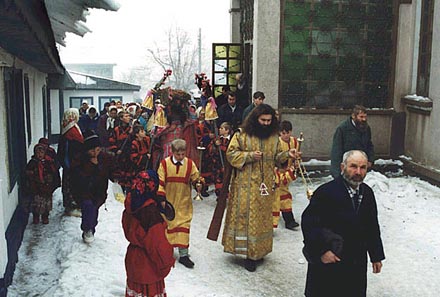
|
|
DANUBE
DELTA |
| Ethnographic aspects |
| History unfold |
| The Iron and Bronze Age |
| Geto-Dacians vestiges |
| Roman vestiges |
| The Byzantine vestiges |
| The XIII-XIV period |
| The XIV-XV period |
| The Ottoman Possession |
| The Modern Times |
| Places History |
| History of Tulcea |
| History of Sulina |
| Objectives: |
| Historical itinerary |
The Delta's area presented under its genesys and evolution's aspects: hystory of the people and places .
The ethnographical aspects of Danube Delta region
The archaeological vestiges and documents reveal in the area-as well as in the whole Dobrudja, firstly, the permanence of the local Romanian population and the superposition of Romanian elements from other regions, and secondly the alogen presence. This social life aspect brought, in time, to the shaping of a "dobrudjan oikumen", axiologically not easy to understand in its complexity, but very interesting as well. Every traditional civilization aspect that we consider to belong to "dobrudjan oikumen" involves the decoding of a relation found in biunivocity with the local Romanians "so called dicians", Moldavians, Transylvanian shepherds and diferent populations established here (Bulgarians, Turks and Tartars, Lipovanians and Ukrainians, Germans, Italians). Every one of these populations has been equally suppliers or receivers of the cultural message, of the originary place or of the places where they stopped for a while, or settled. Under these circumstances a traditional folk culture has developed. In this formula-difficult to decode- an aculturation process is noticed, but also the process of inner growth in which everyone manifested its originality. In time, a civilization belonging to this particular area has been developed, characterised by common elements from all the people and in the same time by particular individualising aspects of every community. The diferentiating elements did not stop the peaceful living together of the communities: everyone had a contribution to the Dobrudjan civilization: the communities mutually respected their life, religion, habits, customs and way of life. The essential note of living inside the traditional Dobrudjan community was tolerance. The modern society adopted this tolerance's tradition, and the "interetnic Dobrudjan model" is oftenly mentioned .
|
| . : . sus |







